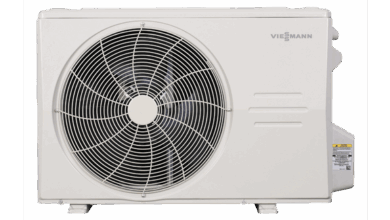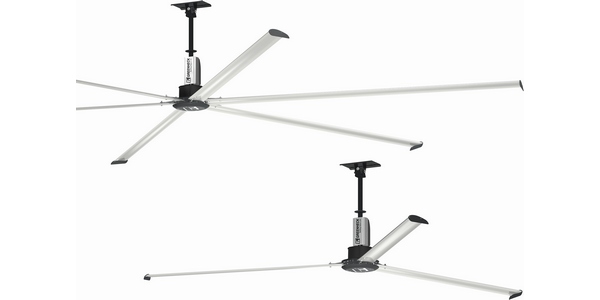ASHRAE Announces Recipients of Student Design Competition, Applied Engineering Challenge
ATLANTA, Ga. — Students who took part in ASHRAE’s 2014 Student Design Competition were challenged to do research and design for a research and design development facility.
The 2014 student competition focuses on a two-story office building in New York City with a research and development facility. ASHRAE student teams outside the United States were allowed to locate the building in the capital of their state, province or country.
ASHRAE also announces the recipients of the Applied Engineering Challenge, which focused on the need to improve indoor air quality, particularly in residential applications in developing countries.
Among the 39 entries from 13 countries, four were awarded first place in the categories that the competition and challenge offer.
First place in HVAC Design Calculations is awarded to a team from the University of Central Florida, Orlando: Christopher Erickson, associate engineer, Universal Creative, Orlando; Ian Faulkner, mechanical designer, exp U.S. Services, Orlando, Fla.; DJ Marshall, mechanical engineer, TLC Engineering for Architecture, Orlando; Richard Suarez, quality engineer, Rockwell Collins, San Diego, California; Kristian Jack Szymanski, Coral Springs, Florida; and Ju Young Yu, Winter Park, Florida. Their faculty advisor is Gabriel Vazquez, Ph.D.
The team’s objective was to design a high-efficiency HVAC system with long life cycle and excellent IAQ while maintaining cost effectiveness. They selected variable refrigerant flow systems with simultaneous heating and cooling and dedicated outdoor air systems with energy recovery. Other equipment included air valves for lab areas and high-efficiency particulate absorption filters and exhaust fans to eliminate contamination.
A 20 ton DOAS unit, three condensing units and several heat recovery units were used to supply required air to all types of VRF units contained within the building. A separate 50 ton DOAS unit was used for lab areas due to the high air change requirement of the clean room and high exhaust rate in the four research and development areas. For each DOAS unit, an exhaust fan was used, and one additional exhaust fan was selected for emergencies only, such as in the case of a refrigeration leak.
The total cost associated with the selected systems was $570,203. The design encompasses efficiency, health and safety, comfort, functionality, longevity, flexibility and maintainability with a low life-cycle cost.
First place in HVAC System Selection is awarded to a team from Kansas State University, Manhattan: John Gaito, Kathryn Helmer, Lexie Oliver, Alex Pint, Megan C. Walkowiak and Gordon Zimmerman, all of whom are senior level students in architectural engineering. Faculty advisors are Julia Keen, Ph.D., P.E., HPBD and Fred Hasler, P.E.
The students selected a ground source heat pump system where water is pumped through vertical piping in the ground, providing a heat source and heat sink for the heat pumps. The main water loop serves the heat pumps and DOAS allowing heat transfer between spaces to maximize energy efficiency.
The GSHP system met all the owner’s requirements in using the ground as a heat sink and heat source to serve the building. As a result, the energy savings are immense. This creates a low-cost, reliable, flexible, maintainable and sustainable system.
An unusual addition to the system was incorporation of a wall of vegetation created by attaching plants that do not require soil to a mesh grid. Given that the building is used for research and design, the exhaust and ventilation rates are significant and consume large amounts of energy. Ten small biowalls are used to decrease energy consumption for the entire building by decreasing the required ventilation in the office spaces.
First place in Integrated Sustainable Building Design is awarded to a team from Montana State University, Bozeman: Elyse Casper; Theresa R. Lindenau, Bozeman, Bozeman; Terra Moran, materials engineer, Imperial Oil, Calgary, Alberta, Canada; Mary Peterson, project engineer in the commercial solutions division, 3M, Saint Paul, Minnesota and Martin Reaves, founder, Monolithic, Bozeman. Their faculty advisor is Kevin Amende, P.E.
For the HVAC systems, students implemented multiple systems with high efficiencies, using the nearby river as a heat exchanger. The main system — a VRF system — is more expensive upfront, but more cost effective and energy saving throughout the life of the building. It was implemented to condition the open office, library, meeting rooms, mailroom and HR office spaces. It has the additional benefit of requiring no duct work, only the routing of small refrigerant lines.
Fresh air is preconditioned by a heat recovery ventilation unit that exchanges energy with exhaust air leaving the building. This recovers energy while improving air quality. Fresh air is vented directly into the fan coil units in the VRF spaces, first mixing and then distributing throughout the rooms. Fresh air for the computer server and research and design spaces is ducted into the heat pumps and blown into the rooms directly. Acoustic and filtration specifications were addressed through appropriate noise dampening and filtration products.
Review of data showed energy consumption was reduced by almost 70 percent; cooling load was reduced by over 60 tons and carbon and greenhouse gas emissions were more than halved. The new design pays back after year twelve, and saves the owner almost $1 million by the end of 40 years. Although the design did not reach net-zero, the improvements were exponential. With a larger budget or new construction, the net-zero goal could be realized.
ASHRAE also announces the recipients of the 2014 Applied Engineering Challenge, in which students were required to design and specify a small, portable air conditioner that must be affordable, maintainable and effective in the local cultural environment.
The first place Applied Engineering Challenge recipients are a team from California Polytechnic State University, San Luis Obispo: Juan Silva, sales operation, SYSERCO, Fremont, California and Nelson E. Echeverry, design engineer, Donald F. Dickerson Associates, Tarzana, California. Their faculty advisors are Steffen Peuker, Ph.D. and Jesse Maddren, Ph.D., P.E.
The system involves a series of measures that a family living in Mexico City can take to improve the IAQ in their house. Starting in the kitchen, a wood stove with a chimney attached was used to vent out the smoke caused from burning biomass. The stove provides heating during cold days, reduces pollution caused by inefficient cooking stoves and provides reliable operation.
Next, in the living room, a window fan was modified with an external air filter at the inlet of the fan, capturing most of the harmful contaminants and allowing fresh air to enter the house. With forced airflow, pollutants are dispersed, thus avoiding high concentrations. A window fan providing a capacity of 1400 CFM is sufficient to supply the entire house. For cooling, students chose a window unit, which helps in reducing humidity.
One major benefit is that units are portable and can easily be installed in a new or different home. Two financial tiers were created: one targets low to middle-class families, providing equipment and devices to satisfy comfort needs and to improve healthy living, but with less expensive materials. The second tier for high- to mid-class families contains a power generator and window unit.
The projects will be shared at the 2015 ASHRAE Winter Conference, Jan. 24-28, Palmer House Hilton, Chicago, Illinois. Also taking place at that time is the ASHRAE co-sponsored AHR Expo, Jan. 26-28, McCormick Place, Chicago.



